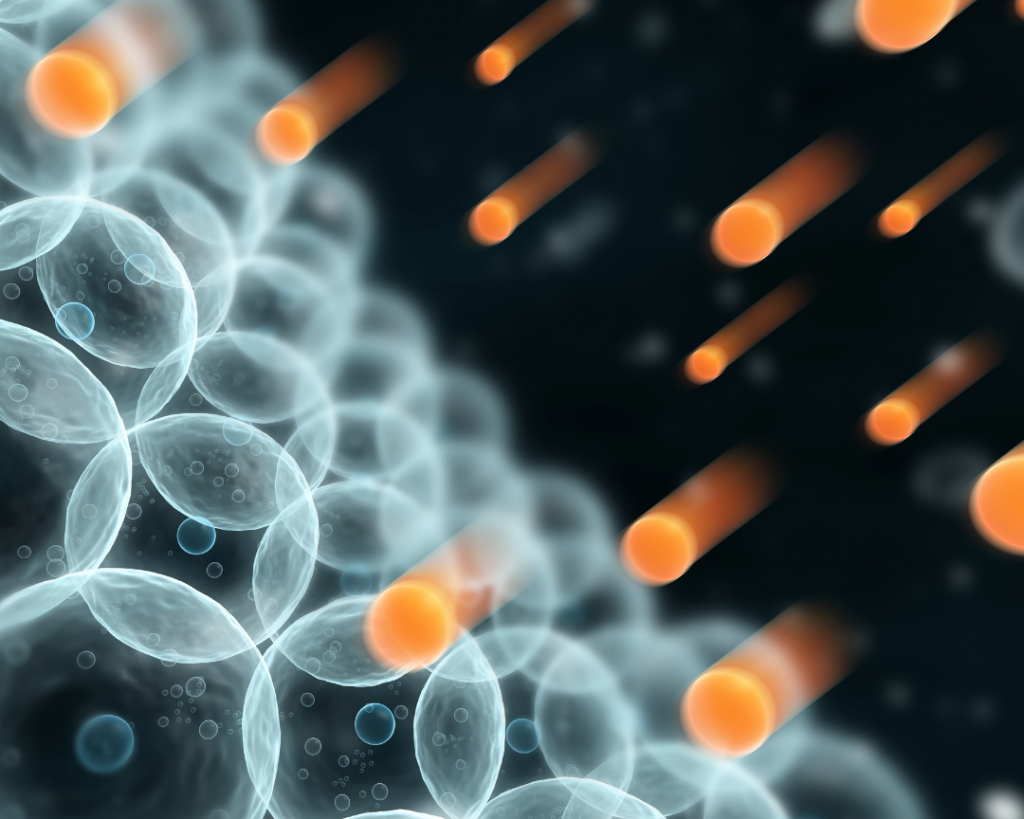REST, OXIDATIVE STRESS AND INFLAMMATION
These three concepts – rest, oxidative stress and inflammation – are closely linked through the hormone: melatonin.
It has been scientifically proven, that the production of melatonin decreases over the years, being 40% lower after the age of 55. This lack of melatonin produces harmful effects in the body, such as the alteration of circadian rhythms, or oxidative stress, as well as slow and irreversible damage to the cellular mitochondria, as their protective capacity is reduced.
Rest, Oxidative Stress, and Inflammation form one of the key cornerstones of Antiaging Preventive Medicine and, therefore, of our programs.
Our biological clock regulates our circadian rhythms. Extrapineal melatonin controls most of our immune and antioxidant systems, as well as the mitochondrial function.
This cornerstone of Rest, Oxidative Stress, and Inflammation is prescribed in a Neolife program , in the following cases:
When sleep disorders are derived from an imbalance in the circadian rhythm. Sleep and rest are not the same; you can rest without sleeping and sleep without resting. Our goal is to improve the quality and quantity of sleep, in order to body restoration.
When oxidative stress and inflammation are generated in our body, due to aging. Chronic administration of melatonin prevents the appearance of inflammation markers, that is, it keeps the body in a state of inflammatory rest, which, together with oxidative rest, prevents damage during aging.
WHAT IS OXIDATIVE STRESS?
Oxidative and inflammatory stresses are key determinants of age-related diseases: cancer, neurodegenerative, pulmonary and kidney diseases, chronic fatigue, diabetes, atherosclerosis, etc.
Oxidative stress is the process of cellular deterioration, that depends on the production of free radicals. Free radicals are generally atoms or small molecules with high reactive capacity, which damage molecules in their environment, and may lead to cell death and tissue dysfunction. This is why it is so important to neutralize them, as soon as they are formed, in order to prevent this collateral damage.


WHAT IS INFLAMMATION?
In addition to free radicals, aging also involves a chronic inflammatory process: inflammation is the immune system’s response to a pathogen. Daily life, our habits, and the passage of time, cause our body to oxidize and enter into a continuous inflammatory state, provoking a process of deterioration and cell death, produced by free radicals.
Additionally, science has recently gone a step further , in relation to the systemic dimension of the depressive disorder, including the role of oxidative stress in this pathology. This has been possible thanks to the conclusions of a study conducted at the University of Granada, where it is suggested that oxidative stress has an influence on depression, and that antidepressant activity may be mediated through the improvement of oxidative stress/antioxidant function.

THE IMPORTANCE OF MELATONIN AND UBIQUINOL (CoQ10) IN SLEEP DISORDERS, OXIDATIVE STRESS, AND INFLAMMATION
Melatonin is an indole hormone derived from tryptophan, an essential amino acid, and is involved in multiple physiological processes.
Over the years, it has been scientifically proven, that both pineal melatonin and extrapineal melatonin, which is produced in the other organs and tissues of our body, decreases with age, and this decrease is directly related to the changes that occur as we grow older.
On the other hand, coenzyme Q10 (CoQ10) is a lipophilic molecule, found in the membranes of all our cells, especially in the mitochondrial membrane. It is found not only in human molecules, but also in yeast and other animals.


EXTRAPINEAL MELATONIN
Our body works like a clock, and presents a cyclical repetition (circadian rhythms), synchronized by melatonin, a hormone synthesized by the pineal gland.
From the age of 55, we already produce 40% less melatonin. The manifestations of a deficit of pineal melatonin are mainly the following:
- Disruption of circadian rhythms, such as sleep/wakefulness and activity/rest
- Affects cognitive abilities, which may lead to seasonal depression



PINEAL MELATONIN
Our body works like a clock and presents a cyclical repetition (circadian rhythms), synchronized by melatonin, a hormone synthesized by the pineal gland.
The manifestations of a deficit of pineal melatonin are mainly the following:
- Disruption of circadian rhythms, such as sleep/wakefulness and activity/rest
- Affects cognitive abilities, which may lead to seasonal depression

UBIQUINOL: COENZYME Q10
Its main functions are to maintain cellular oxidative balance. A deficit in these levels may favor the appearance of homeostatic imbalances, which in the future could lead to the appearance of a disease, such as insulin resistance.
CoQ10 supplementation improves:
- Insulin resistance (3), as well as basal glucose and glycated hemoglobin levels (4)
- Cardiac function in case of disease (5)
- Muscle work in the case of athletes. Additionally, it reduces the need for recovery. (6)

WHY TURN TO NEOLIFE TO REVERSE SLEEP DISORDERS, OXIDATIVE STRESS, AND INFLAMMATORY RESPONSE?
EXPERTS IN REST AND SLEEP
For almost ten years, the team at Neolife has treated hundreds of patients with sleep disorders of chronobiotic origin, where the use of melatonin, to restore their physiological levels, has proven tremendously useful.
EXPERTS IN OXIDATIVE STRESS AND INFLAMMATION
And the same experience that we have in sleep disorders, we also have in the field of Oxidative Stress and Inflammation, because these are interdependent. In this case, supplementing melatonin, at the right moment and in exact doses and supplemented with CoQ10 make all the difference.
CUSTOMIZATION AND INDIVIDUALIZED DOSES
Thekey to improving sleep lies , to a great extent , in taking the exact dose of melatonin at the right moment of the day. In order to individualize the doses, we first carry out a study of the melatonin curve in saliva, and the levels of oxidative stress, and coenzyme Q10 in the mitochondria.
SAFETY OF BIOIDENTICAL HORMONES
We always use pharmacy compounded bioidentical hormones for melatonin supplementation.
HIGH QUALITY SUPPLEMENTS: CoQ10
In order to provide our customers with the best coenzyme Q10 on the market, Neolife has developed our own supplement within our Neoactives product line: NeoQ10 Ubiquinol (as Ubiquinol, it is ten times more potent than Ubiquinone).
CONTINUOUS MEDICAL FOLLOW-UP
Our medical team identifies, in each situation, which supplements are the most efficient, and in which doses, carrying out a continuous and objective monitoring of the evolution of each patient’s health.
NEOLIFE MULTIDISCIPLINARY TEAM
The assessment of the melatonin and CoQ10 supplementation is carried out jointly by Neolife’s medical team, and our partner in this area, the International Melatonin Institute, one of the world’s leading centers.

